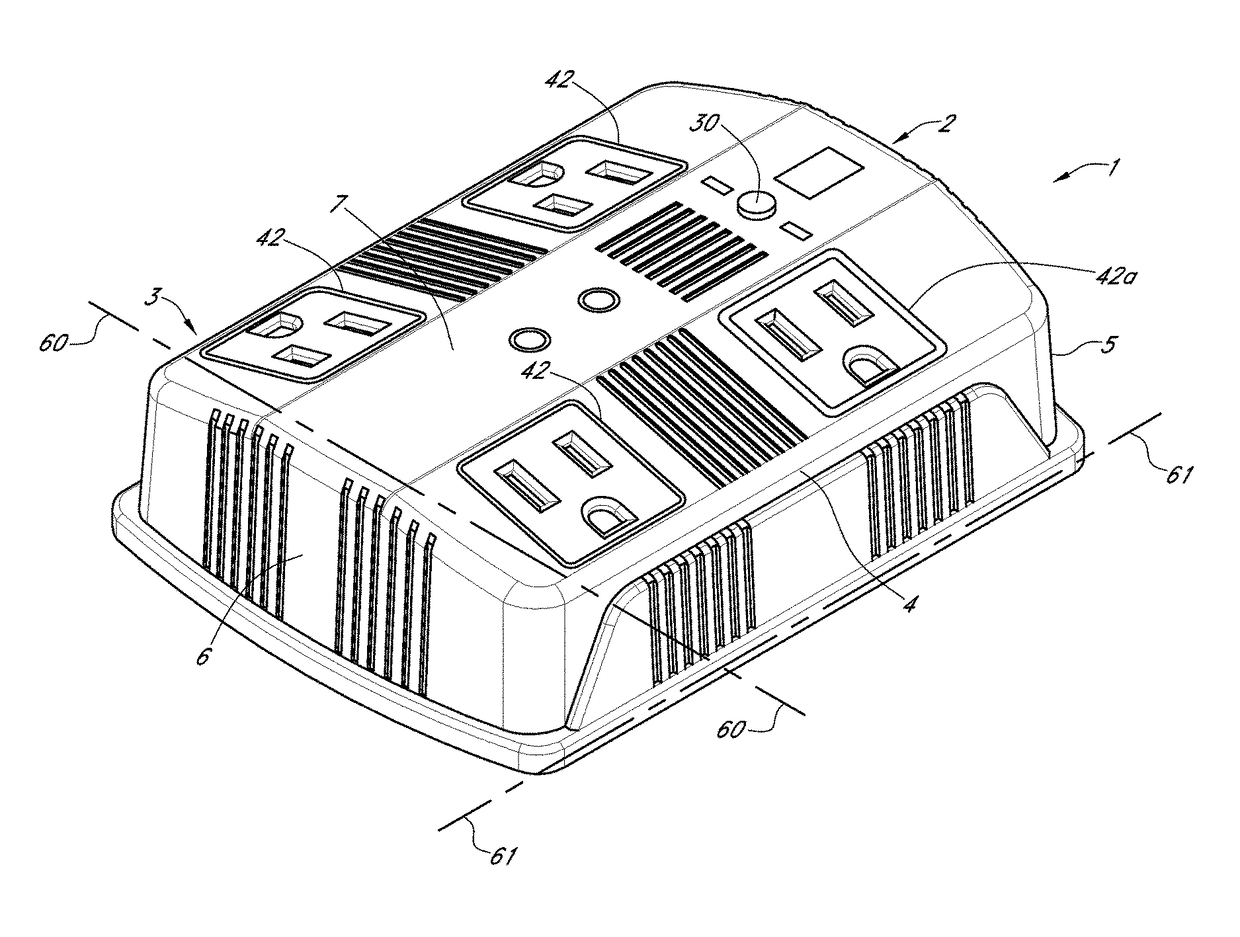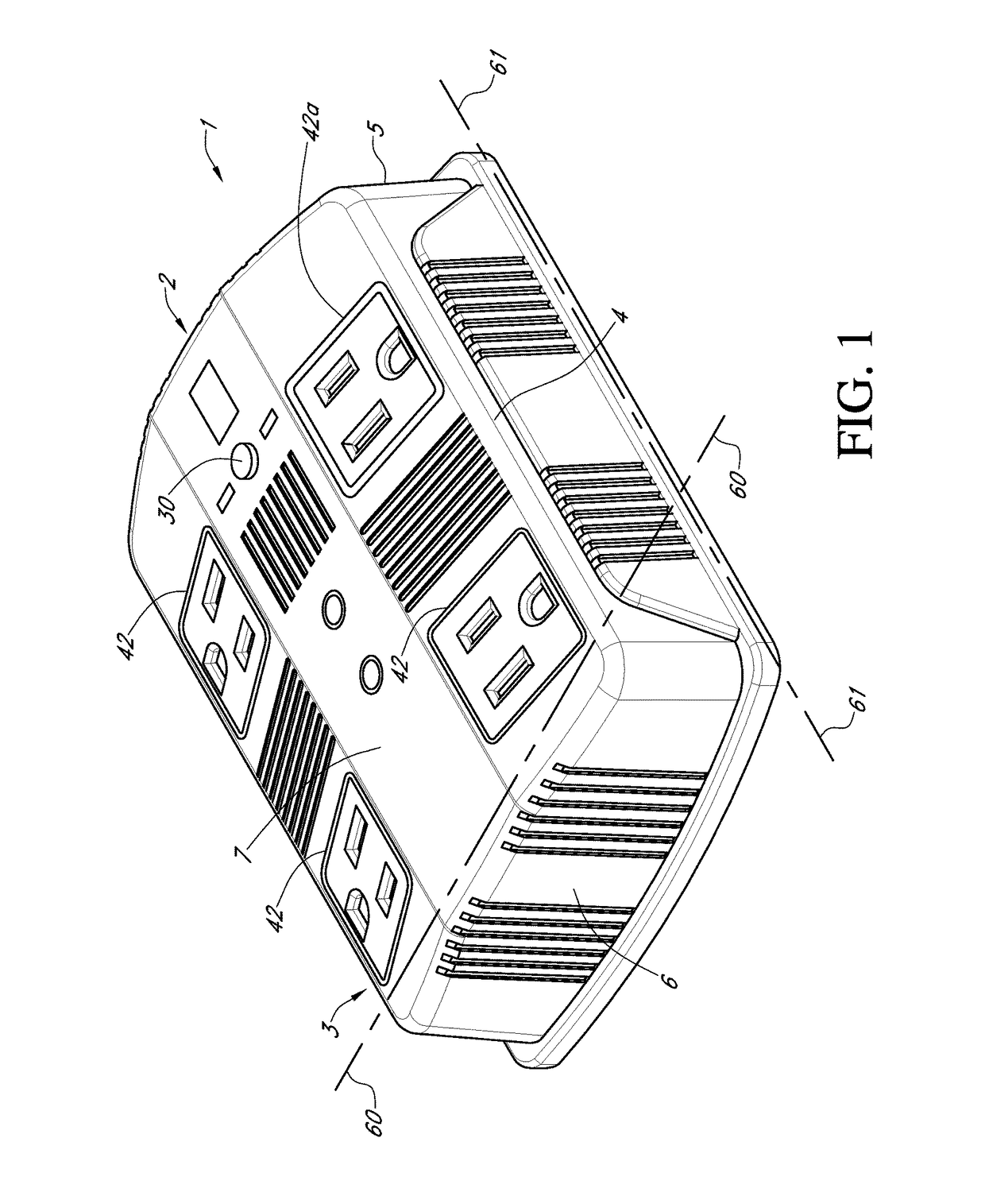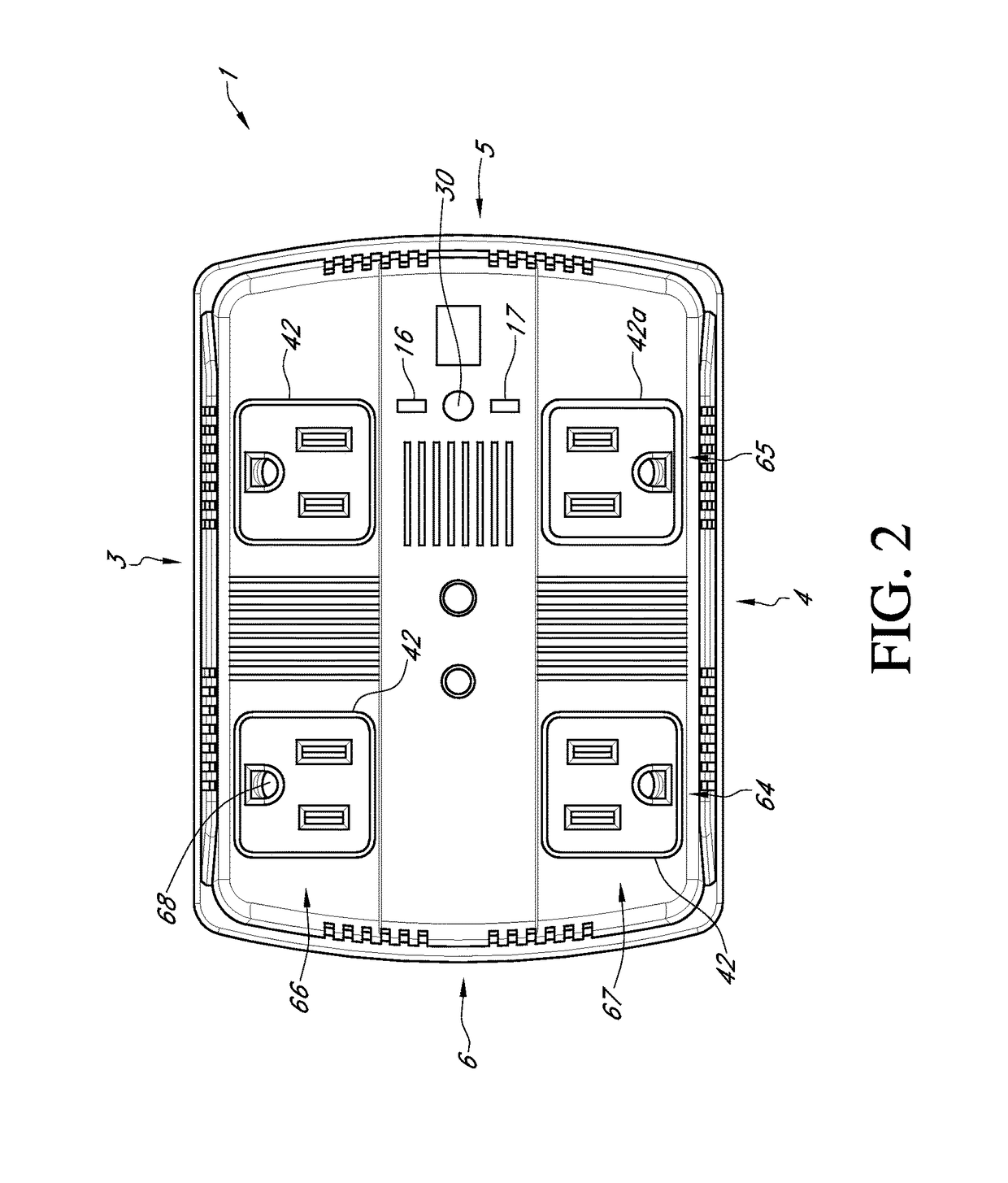Electrical outlet unit
a technology of electrical outlet and charging device, which is applied in the direction of coupling device connection, instruments, horology, etc., can solve the problems of increasing nonrenewable carbon based resources such as coal, oil and natural gas, and charging device consumption no power,
- Summary
- Abstract
- Description
- Claims
- Application Information
AI Technical Summary
Benefits of technology
Problems solved by technology
Method used
Image
Examples
Embodiment Construction
—BRIEF DESCRIPTION OF THE FIGURES
[0028]In order that the advantages of the invention will be readily understood, a more particular description of the invention briefly described above will be rendered by reference to specific embodiments illustrated in the appended drawings. Understanding that these drawings depict only typical embodiments of the invention and are not therefore to be considered limited of its scope, the invention will be described and explained with additional specificity and detail through the use of the accompanying drawings.
[0029]FIG. 1 is a perspective view of one embodiment of an electrical outlet unit subject of the present patent application.
[0030]FIG. 2 is a front view of the electrical outlet unit of FIG. 1.
[0031]FIG. 3 is a side view of the electrical outlet unit of FIG. 1.
[0032]FIG. 4 is a view of the rear side of the electrical outlet unit of FIG. 1
[0033]FIG. 5 is a top view of the electrical outlet unit of FIG. 1.
[0034]FIG. 6 is a front view of another ...
PUM
 Login to View More
Login to View More Abstract
Description
Claims
Application Information
 Login to View More
Login to View More - R&D
- Intellectual Property
- Life Sciences
- Materials
- Tech Scout
- Unparalleled Data Quality
- Higher Quality Content
- 60% Fewer Hallucinations
Browse by: Latest US Patents, China's latest patents, Technical Efficacy Thesaurus, Application Domain, Technology Topic, Popular Technical Reports.
© 2025 PatSnap. All rights reserved.Legal|Privacy policy|Modern Slavery Act Transparency Statement|Sitemap|About US| Contact US: help@patsnap.com



